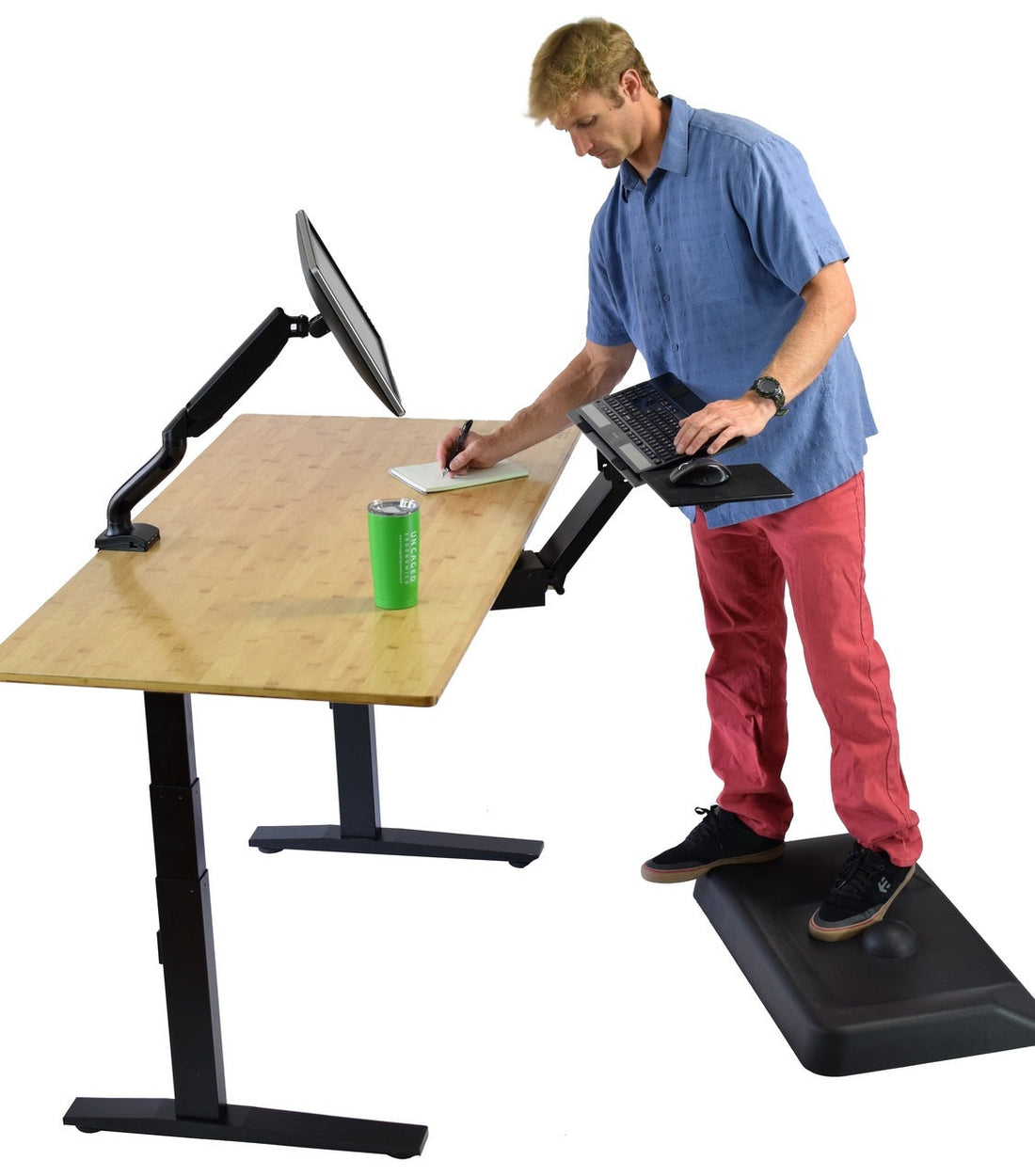
The number and volume of the muscles that you use for standing are higher than sitting, so standing definitely burns more calories than sitting. This could lead to less risk of obesity, because you’re burning more calories standing than sitting. Several studies over the last decade conclude that sitting for too long leads to more disability as we age, doubles the change of developing diabetes and heart disease, and could possibly shorten lifespans. In this article, we’ll delve into the ergonomic benefits of using an adjustable height sit-to-stand desk.
Sitting too much is hazardous to your health
More than a dozen studies conducted over the past decade suggest that too much sitting leads to more disability as we age, doubles the risk of diabetes and heart disease, and could even shorten our lifespan. As an example, in a February 2014 study involving more than 92,000 women, Harvard researchers found that the more time participants spent sitting at work, driving, or watching TV, the greater their risk of dying from heart disease, cancer, or strokes. Those are a lot of risks to choose to remain at a sitting desk during your workday.
It’s being said that sitting is the modern health equivalent of smoking—and more people are spending longer hours sitting in front of their office computers. Are standing desks or sit/stand desks the solution to rising rates of diabetes, heart disease, and obesity?
What’s so bad about sitting at your desk?
Sitting desks have shown a lower early mortality risk. A 2012 study found that when people reduced their sitting time to only two or three hours a day, their life expectancy increased. It is additionally reported that ovarian, prostate, lung, and endometrial cancer also showed a strong connection to prolonged sitting, so standing can help reduce this risk.
Such news may have contributed to a 50 percent rise in the sales of standing desks over the past year as more companies invest in them for their employees. What follows are some benefits of using a standing desk or sit-to-stand desk as opposed to remaining at a sitting desk all day.
Sitting for extended periods can be damaging to the spine, so standing is preferable. Sustained contracture of the abdominal and hamstring muscles, are two things that can happen from sitting all day. When this occurs the mechanics of the lower back are imbalanced. Minimize this imbalance and help maintain better spinal alignment and muscle symmetry by using a standing desk, or a sit stand desk—even for a portion of your workday.
How a standing desk can help improve your health
If you want to improve your posture and reduce eye strain, a standing desk is a smart option. Standing leads to better overall posture and a stronger core. Your spine falls into a harmful “C” shape, from craning your neck toward your monitor when you remain at a sitting desk for hours. Elongating your spine restores the natural “S” shape to your spine, comes with standing at work.
Using a standing desk helps your blood flow freely and delivers more oxygen to your muscles, so you feel better, longer. Standing gives you an energy boost. When you stand, this removes some pressure on internal organs, which in turn allows everything to function better. This means that you’re likely to be able to concentrate longer on each task, with the increased energy from standing up.
If you spend just two hours of your work day working while standing, you can burn an additional 340 calories a day according to a Mayo Clinic study. Remaining at a sitting desk all day can decrease the range of motion for all your muscle groups, whereas working at an adjustable-height sit stand desk can increase flexibility.
Reduce risk of serious health issues
People who stand more tend to walk around more, so there’s a reduced risk of obesity. You burn more calories when you move more often. Sitting all day seems to be related to reducing the body’s effectiveness in regulating blood sugar known as metabolic syndrome, a precursor to type 2 diabetes. So there’s a reduced risk of type 2 diabetes when you use a standing desk or sit stand desk.
Reduced risk of heart disease. A recent Kaiser Permanente study suggested that men who spent at least five hours a day sitting had twice the risk of heart failure when compared to those who sit less than two hours a day and exercise often.
One of the most common complaints of office workers who sit all day is back pain. This pain can be caused from prolonged use of sitting desks and several studies show that standing desks can dramatically decrease this discomfort.
The bottom line
When your stress and fatigue is lowered it’s easier to do your best—and recent studies have shown a strong correlation with standing desks improving mood and energy levels. It’s easier to stay on task by standing at your desk rather than sitting. And, users of stand-up computer desks report less frequent and less intense headaches than their sitting counterparts.

